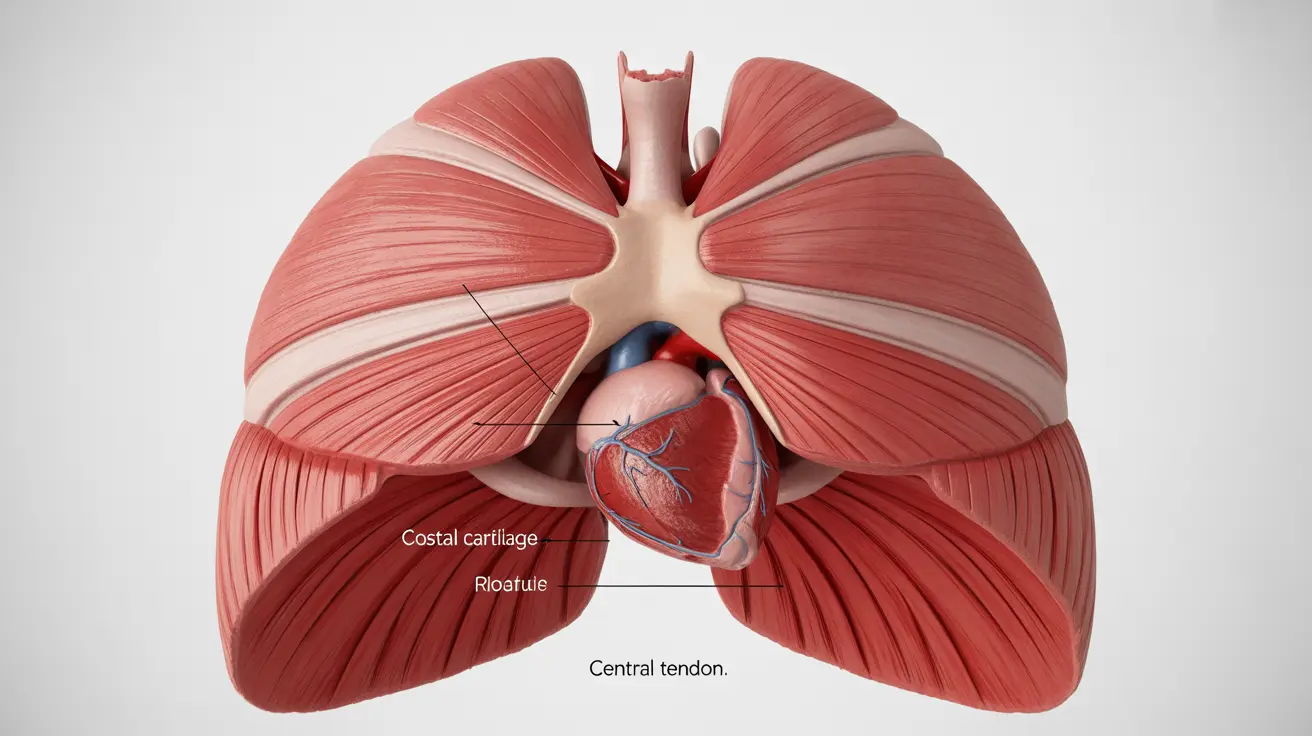Diaphragm pain can be a concerning and uncomfortable experience that affects your ability to breathe normally and perform daily activities. This dome-shaped muscle, which plays a crucial role in breathing, can become painful due to various underlying conditions and factors. Understanding the causes, symptoms, and treatment options for diaphragm pain is essential for proper management and knowing when to seek medical attention.
In this comprehensive guide, we'll explore the common causes of diaphragm pain, effective treatment approaches, and important warning signs that indicate the need for immediate medical care.
Common Causes of Diaphragm Pain
Diaphragm pain can stem from several different conditions and circumstances:
Exercise-Related Causes
One of the most common causes of temporary diaphragm pain is intense physical activity, particularly in runners and athletes. This condition, often called a "side stitch," occurs when the diaphragm becomes stressed during exercise.
Medical Conditions
Several medical conditions can lead to diaphragm pain:
- Hiatal hernia
- Pneumonia
- Pleurisy
- Pericarditis
- Gastroesophageal reflux disease (GERD)
Trauma and Injury
Direct injury to the chest or abdomen can cause diaphragm pain. This might include:
- Fractured ribs
- Blunt force trauma
- Surgery-related complications
- Muscle strain
Treatment Options and Home Remedies
The treatment for diaphragm pain varies depending on the underlying cause. Here are some common approaches:
Medical Treatments
Professional medical treatments may include:
- Anti-inflammatory medications
- Prescription medications for specific conditions
- Physical therapy
- Surgery in severe cases
Effective Home Remedies
Several home remedies can help manage diaphragm pain:
- Gentle stretching exercises
- Applied heat therapy
- Deep breathing techniques
- Proper posture maintenance
- Adequate rest
Prevention and Lifestyle Changes
Preventing diaphragm pain often involves making certain lifestyle modifications:
Diet and Eating Habits
- Eating smaller, more frequent meals
- Avoiding trigger foods
- Maintaining a healthy weight
- Not lying down immediately after eating
Exercise Modifications
- Proper warm-up before exercise
- Controlled breathing during physical activity
- Gradual intensity increase
- Regular stretching routines
Warning Signs and Emergency Symptoms
Certain symptoms warrant immediate medical attention:
- Severe, persistent chest pain
- Difficulty breathing
- Blue lips or fingertips
- Unexplained weight loss
- Fever with chest pain
- Severe abdominal pain
Frequently Asked Questions
What are the most common causes of diaphragm pain?
The most common causes include exercise-related strain (side stitches), hiatal hernia, GERD, chest infections, and trauma to the chest or abdomen. Underlying medical conditions like pneumonia or pleurisy can also cause diaphragm pain.
How is diaphragm pain typically treated, and what are the best home remedies?
Treatment typically includes a combination of medical interventions and home remedies. Medical treatments may involve anti-inflammatory medications or specific treatments for underlying conditions. Effective home remedies include gentle stretching, heat therapy, deep breathing exercises, and proper rest.
Can gallbladder problems cause symptoms similar to diaphragm pain, and how are they diagnosed?
Yes, gallbladder problems can cause pain that mimics diaphragm pain, particularly in the upper right abdomen. Diagnosis typically involves physical examination, imaging tests like ultrasound or CT scans, and blood tests to check for inflammation or infection.
What lifestyle changes can help manage or prevent diaphragm pain associated with conditions like hiatal hernia?
Key lifestyle changes include maintaining a healthy weight, eating smaller meals, avoiding trigger foods, not lying down after eating, practicing good posture, and performing specific exercises recommended by healthcare providers.
When should I seek immediate medical attention for symptoms that could be related to diaphragm pain?
Seek immediate medical care if you experience severe chest pain, difficulty breathing, blue lips or fingertips, unexplained weight loss, fever with chest pain, or severe abdominal pain. These symptoms could indicate serious underlying conditions requiring prompt medical attention.




